DJI Mavic Mini: Reviewing a sensational drone
Last update on 02.10.2020 | 0 Kommentare
DJI has once again succeeded in turning the entire drone industry upside down with a new model. The DJI Mavic Mini weighs only 249 grams, yet is packed with features I expect from a camera drone today. In this article, we’ll tell you what the DJI Mavic Mini is all about and if we are happy with this small copter.
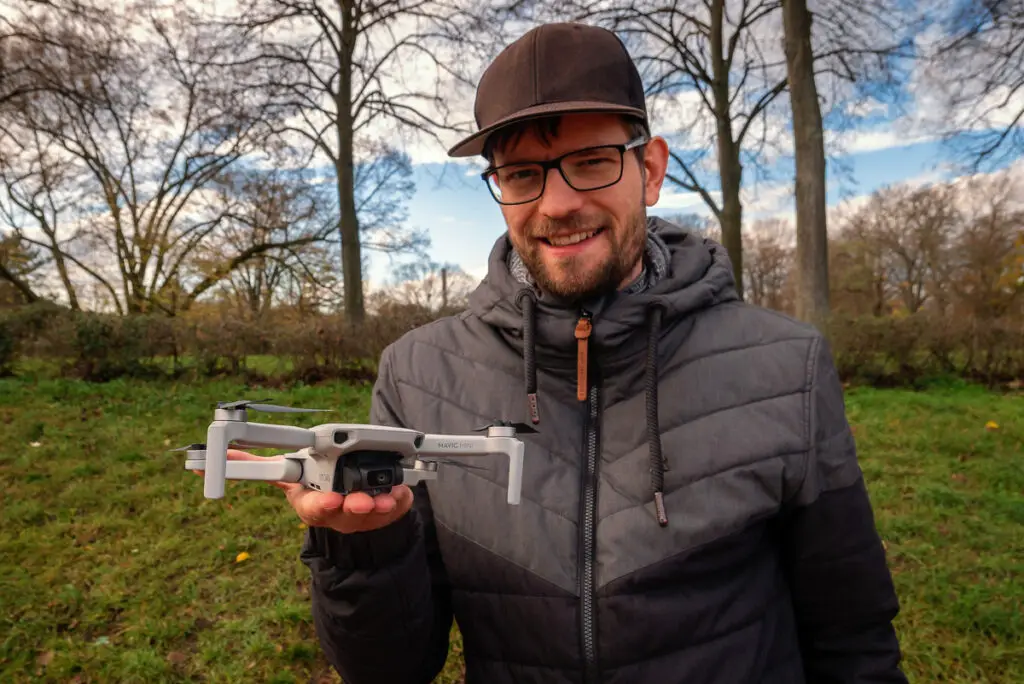
The name of the DJI Mavic Mini is well-deserved. The camera drone is so small that it fits loosely on the palm of your hand, yet weighs the same as a smartphone. Its low ballast alone should make this model the traveling drone of choice in the years to come.
But the real scoop is that many governments around the world have now agreed on legislation for drones and corresponding rules have come into force. In many countries, however, certain regulations only apply from a take-off mass of 250 grams or more. And the DJI Mavic Mini is exactly one gram below this critical weight. So drone pilots in Canada, the USA, Europe, and dozens of other countries can look forward to many regulatory reliefs.
So the enthusiasm is huge! On top of that, the Mavic Mini is sold by DJI at a moderate price.
Buy the DJI Mavic Mini hereBut what can such a small quadrocopter do and can one expect the same excellent flight characteristics as other DJI models? We have tested this in detail and report here about our impressions and experiences!
The flight characteristics of the DJI Mavic Mini
To maximize the compactness of the DJI Mavic Mini, this drone is also foldable. We already know this from the larger predecessor models in the Mavic range.
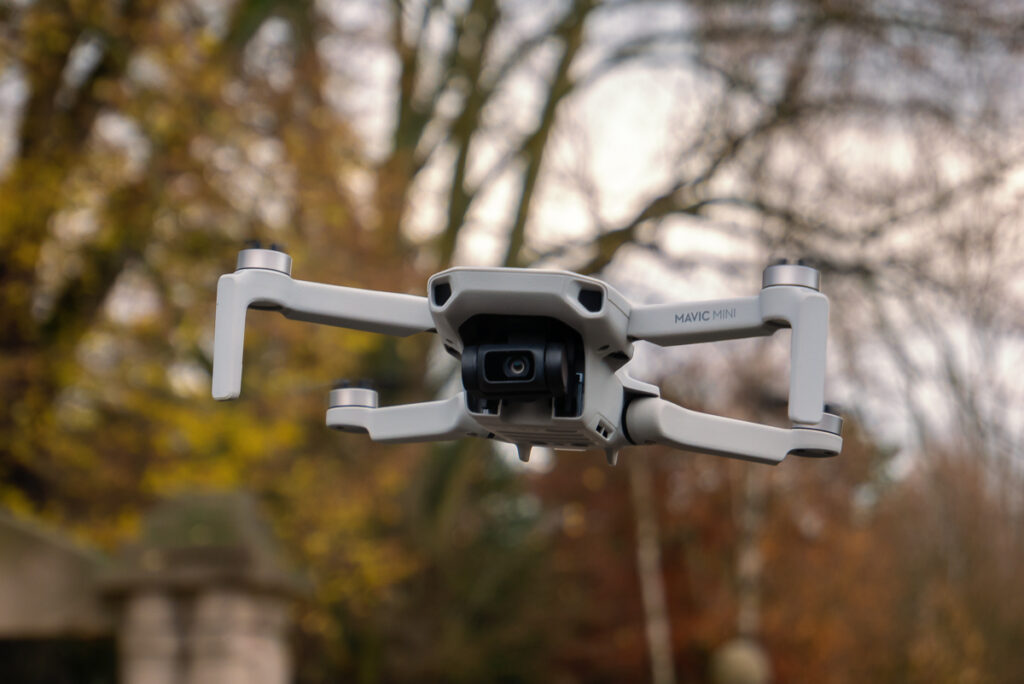
With a flight time of about 30 minutes, the Mavic Mini’s battery lasts surprisingly long. In return, the maximum speed of 46.8 km/h is relatively low compared to other DJI drones. The Mavic Air reaches 68.4 km/h in S-mode after all. Those pilots for whom photography is the main focus may find that the speed plays a rather minor role anyway. But if you want to create lots of videos of landscapes, the Mavic Mini might be too slow for you.
The radio range is 2,000 meters, but due to the European radio standards in Germany, where we tested the copter, the power is reduced so that the drone can move about 500 meters away from the remote control according to DJI. In fact, in an open field during a range test, I even reached a distance of more than 800 meters before the signal stopped. In the city, where there are many interfering signals, I have sometimes noticed strong delays in radio transmission or even failed connections at a distance of about 50-100 meters.
In terms of flight stability and precession, the Mavic Mini scores again with a combination of the two satellite navigation systems GPS and GLONASS. The copter is able to determine its position very accurately using many location data and to take countermeasures in case of unwanted deviations. This allows the drone to maintain its position very accurately and makes it much easier to operate the Mavic Mini.
On the other hand, the copter’s obstacle sensing is less elaborate than in other Mavic models. The DJI Mavic Mini only detects the structure underneath the aircraft to better maintain its position. Obstacles in the flight direction are not detected.
The camera of the DJI Mavic Mini
The Mavic Mini is equipped with a 12 megapixel camera that allows you to take photos with a resolution of 4000×3000 (4:3 aspect ratio) or 4000×2250 (16:9).
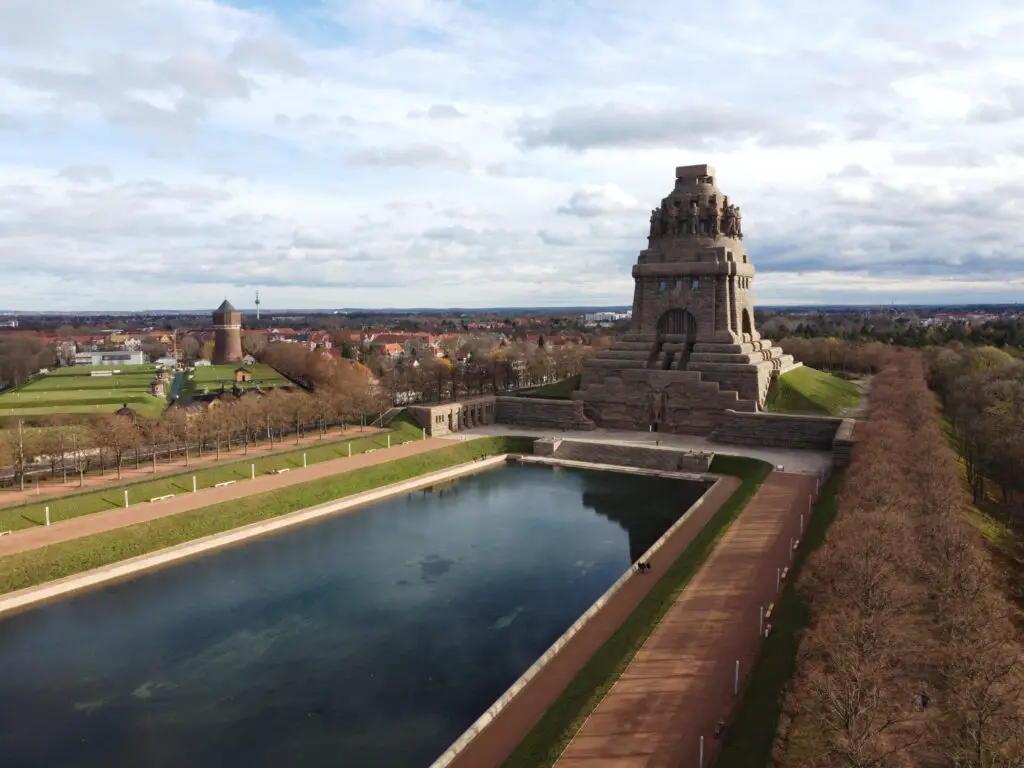
Photos can only be saved in JPEG format. The DNG format, which allows better post-processing, is not supported. This point will certainly deter professional photographers, but for most pilots, the quality of the photos is excellent even without post-processing.
Videos can be saved with FullHD or 2.7K resolution. This is also completely sufficient for private use. We have edited together a few demo recordings of our tests here so that you can get your own impression.
While I am very pleased with the photo quality of the DJI Mavic Mini, I have to make some concessions with the videos. As long as the DJI Mavic Mini flies close to the ground or there is no wind, the videos look great. However, as soon as it gets a bit more challenging, there will be some shaky shots, as you can see in this video:
Here I have picked out an exemplary recording where the wobbling is very obvious. If you look at the stripes in the field, you can detect the shaking. But the shot was also taken at a height of 100 meters above the ground, where the Mavic Mini is exposed to even stronger air currents than at ground level. For private purposes, these pictures are still sufficient. Professional filmmakers, however, would be advised to use a more expensive drone.
To help you choose the right drone, we have summarized the main specifications of the different Mavic models:
| Specification | Mavic Mini | Mavic Air | Mavic 2 Pro | Mavic 2 Zoom |
|---|---|---|---|---|
| Weight | 249 grams | 430 grams | 907 grams | 905 grams |
| Max. speed | 46.8 km/h | 68,4 km/h | 72 km/h | 72 km/h |
| Flight time | 30 min | 21 min | 31 min | 31 min |
| Sensor | 1/2.3“ 12MP | 1/2.3“ 12MP | 1“ 20MP | 1/2.3“ 12MP |
| Photo format | JPEG | JPEG/RAW | JPEG/RAW | JPEG/RAW |
| Video resolution | 2.7k 30p | 4k 30p | 4k 30p | 4k 30p |
| Obstacle Sensing | down | down, forward/backward | left/right, up/down, forward/backward | left/right, up/down, forward/backward |
DJI Fly: new app for controlling the Mavic Mini
The DJI Mavic Mini can again be operated with a remote control in combination with a smartphone. DJI has developed a new app for this purpose, which is significantly slimmer than the DJI Go 4 app and therefore does without many setting options. But I don’t see this as a disadvantage. Even on smartphones, hardly anyone nowadays sets the exposure time manually, and yet the image quality is good in most cases. The DJI Mavic Mini is designed to take some nice snapshots quickly and easily.

There are three different shooting options in the app: photo, video and QuickShot.
In photo mode, exposure time (1/8000 to 4″) and ISO (100 – 3200) can be set manually. But if you don’t want to do that, you can leave it to the automatic mode to choose the right settings. If your photo is exposed too brightly or too darkly in the automatic mode, you can use exposure compensation (EV) to brighten or darken the image. In addition to individual photos, DJI Mavic Mini can also take pictures at fixed intervals, for example, to create time-lapse photography.
In video mode, the possible settings are much more limited. Here I can set the resolution and frame rate in addition to the exposure correction. There is a choice of FullHD (25/30/50/60 fps) and 2.7K (25/30fps).
To avoid having to control the drone myself during difficult maneuvers, QuickShots also offers a third shooting mode. With QuickShots, the DJI Mavic Mini autonomously performs certain flight maneuvers and films a defined point. There are three QuickShots available in the DJI Fly app:
- Dronie: The drone flies backwards and up
- Rocket: The drone rises straight up and slowly lowers the camera down
- Circling: The drone orbits a position (point of interest)
- Helix: The drone orbits a position and increases the flight radius more and more.
With the QuickShots you can film yourself wonderfully without having to hold a remote control in your hand. You don’t always want to show it in a video.
It’s a pity that the DJI Mavic Mini does not have a Follow Me mode or ActiveTrack. This means that the automated tracking of objects is not possible.
Can I fly anywhere with a DJI Mavic Mini?
Before you get the wrong impression, I’d like to mention at the end of our test that the DJI Mavic Mini is of course subject to laws and that there is no lawless space for small drones. Although there are some facilitations, you will often need to have drone insurance for your Mavic Mini. All other requirements can be found in our international collection of laws. Please inform yourself before your first flight what you are allowed to do and under which conditions.
One more tip: Even if it’s not mandatory, it may still make sense to mark your DJI Mavic Mini. This will allow finders to bring the drone back to you in case you lose it.
My conclusion about the DJI Mavic Mini
Even though I am really enthusiastic about the DJI Mavic Mini, this drone can of course not meet all the requirements of a demanding filmmaker or photographer. The camera specifications are not (yet) good enough for that and with other things like the flight speed you also have to make some concessions.
Now comes the big BUT! Among photographers, it is said: “The best camera is the one you have with you.” The same is true for flying cameras, of course:
The best drone is the one I have with me and am allowed to fly.
The DJI Mavic Mini is miles ahead of all other models. Its compactness, ease of operation, and the chance to avoid many bureaucratic hurdles make the drone an important companion for drone pilots. In this context, I can only recommend everyone to take a closer look at the DJI Mavic Mini.
Buy the DJI Mavic Mini hereAre there any questions left unanswered? Then let’s get into the comments! We also look forward to hearing about your personal experiences with the DJI Mavic Mini.
 EU-wide drone regulations: Classes of drones explained
EU-wide drone regulations: Classes of drones explained
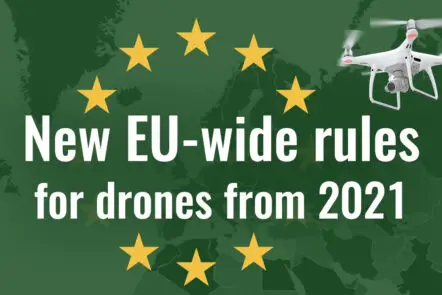 New EU-wide rules for drones from 2021
New EU-wide rules for drones from 2021
 EU-wide drone regulations: The Open category explained
EU-wide drone regulations: The Open category explained
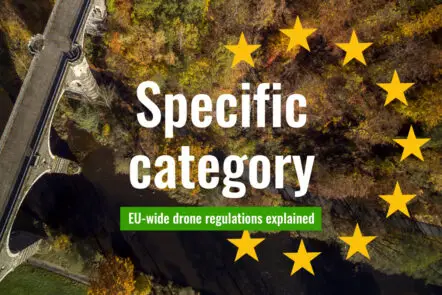 EU-wide drone regulations: The Specific category explained
EU-wide drone regulations: The Specific category explained